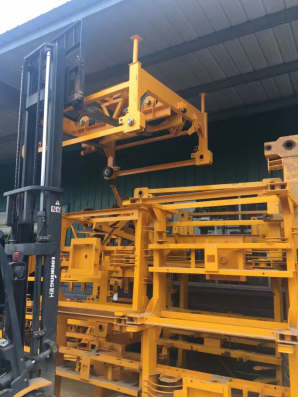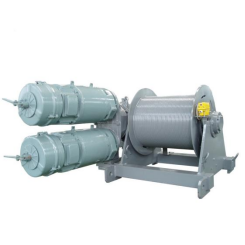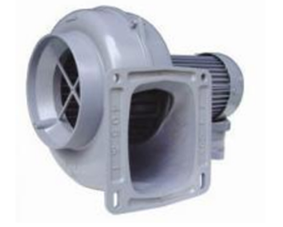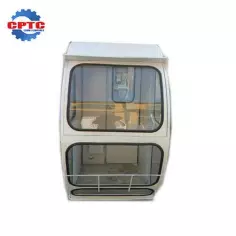Tower cranes are responsible for the efficient and precise lifting and transportation of heavy materials to various heights on a construction site. Given the critical role they play and the hazardous nature of their operations, ensuring the safety of the operators working within the crane cabins is paramount. There are essential safety measures specifically designed for tower crane cabins.

Safety Measures for Tower Crane Cab Structures
Cabin Materials and Strength
High-strength metals are commonly used due to their ability to withstand the rigors of construction environments. These materials must be carefully selected to meet specific strength requirements, including resistance to compressive forces and wind loads. Moreover, the thickness and gauge of the materials should be sufficient to provide adequate structural integrity.
Cabin Stability
The connection between the cabin and the tower crane must be secure and robust, often achieved through the use of high-strength bolts and other fastening mechanisms. Additionally, the cabin’s design should incorporate features that minimize vibration and oscillation. Balancing weights can be employed to counteract the effects of uneven loads or wind forces, enhancing overall stability. Furthermore, the cabin’s mounting points on the tower crane should be designed to distribute loads evenly and prevent stress concentrations.

Operational Safety Measures
Operator Training
- Technical Knowledge: Operators should have a thorough understanding of the crane’s mechanical systems, electrical components, and hydraulic controls.
- Operational Procedures: Training should focus on standard operating procedures, such as pre-operational checks, load lifting techniques, and emergency response.
- Safety Regulations: Operators must be familiar with all applicable safety regulations and standards.
- Emergency Procedures: Training should cover emergency procedures, including how to respond to equipment failures, power outages, and other unexpected events.
Safety Awareness
- Hazard Recognition: Operators should be able to identify potential hazards in the work environment, such as overhead power lines, unstable ground, and weather-related risks.
- Risk Assessment: Operators should be trained to assess risks and take appropriate precautions to mitigate them.
- Safe Work Practices: Operators should be encouraged to adopt safe work practices at all times, such as wearing personal protective equipment (PPE) and avoiding distractions.
Operational Procedures
- Startup and Shutdown: Operators should follow a strict sequence of steps when starting and stopping the crane. This includes conducting pre-operational checks, engaging safety devices, and verifying that the work area is clear.
- Operation: During operation, operators should:
- Avoid sudden starts and stops, which can cause loads to swing and damage equipment.
- Maintain a safe working load and avoid overloading the crane.
- Use appropriate signaling methods to communicate with ground personnel.
- Conduct regular inspections of the crane and its components.

Environmental Safety Measures
Adverse Weather Conditions
- Wind Protection: To withstand strong winds, tower cranes should be equipped with wind bracing and guying systems. Wind sensors can be installed to monitor wind speeds and trigger automatic safety measures, such as reducing the crane’s operating radius or stopping operations altogether when wind speeds exceed safe limits.
- Precipitation: Adequate drainage systems should be in place to prevent water from accumulating on the crane structure, which could lead to corrosion or imbalance. Rain covers can be used to protect electrical components and control systems from moisture.
- Lightning Protection: A comprehensive lightning protection system is crucial for tower cranes. This includes lightning arrestors, grounding systems, and bonding conductors to safely dissipate electrical charges during a lightning strike.
Coordination with the Surrounding Environment
- Clearance Distances: Sufficient clearance distances must be maintained between the tower crane and nearby structures, overhead power lines, and other obstructions. These clearances should be calculated based on the crane’s maximum outreach and the potential swing radius of the load.
- Site Conditions: The ground conditions at the construction site should be assessed to ensure that the crane is properly supported and that there is no risk of settlement or instability.
- Environmental Impact: Measures should be taken to minimize the environmental impact of the crane, such as using environmentally friendly lubricants and implementing spill containment procedures.

Equipment Maintenance Safety Measures
Regular Inspections
- Visual Inspections: A thorough visual inspection of the equipment should be conducted to check for any signs of damage, corrosion, or wear and tear.
- Critical Components: Key components such as control levers, instrument panels, and hydraulic systems should be inspected for proper function and alignment.
- Safety Devices: Safety devices, including emergency stop buttons, limit switches, and overload protection devices, should be tested to ensure they are operating correctly.
Safe Maintenance Practices
- Lockout/Tagout Procedures: Before working on any equipment, it is essential to follow lockout/tagout procedures to isolate the equipment from its energy source and prevent accidental startup.
- Personal Protective Equipment (PPE): Maintenance personnel should wear appropriate PPE, such as safety glasses, gloves, and hard hats, to protect against injuries.
- Work Area Safety: The work area should be kept clean and organized to prevent accidents. Adequate lighting should be provided, and tripping hazards should be eliminated.
- Safe Lifting: If heavy components need to be lifted or moved, proper lifting techniques and equipment should be used to prevent injuries.
- Confined Space Entry: If maintenance work requires entering a confined space, such as a tank or vessel, the appropriate permits and procedures should be followed.

Concluding Remarks
The safety of tower crane operators is not merely a compliance issue but a reflection of an organization’s commitment to its workforce. By fostering a strong safety culture that prioritizes the well-being of operators, we can create a safer working environment. Tower crane cabin supplier CPTC has outlined essential safety measures for tower crane cabins, but it is imperative to remember that safety is a journey, not a destination.
Related Products
Tower Crane Trolley
Multiple functions
Intuitive operation
Tower Crane Trolley Mechanism
Tower Crane Hoisting Device
Smooth operation, precise control
Highly adaptable
Trolleying Fan for Tower Crane
High Quality Crane Operator Cabin for Tower Crane
High quality steel material for frame
The cab is…





